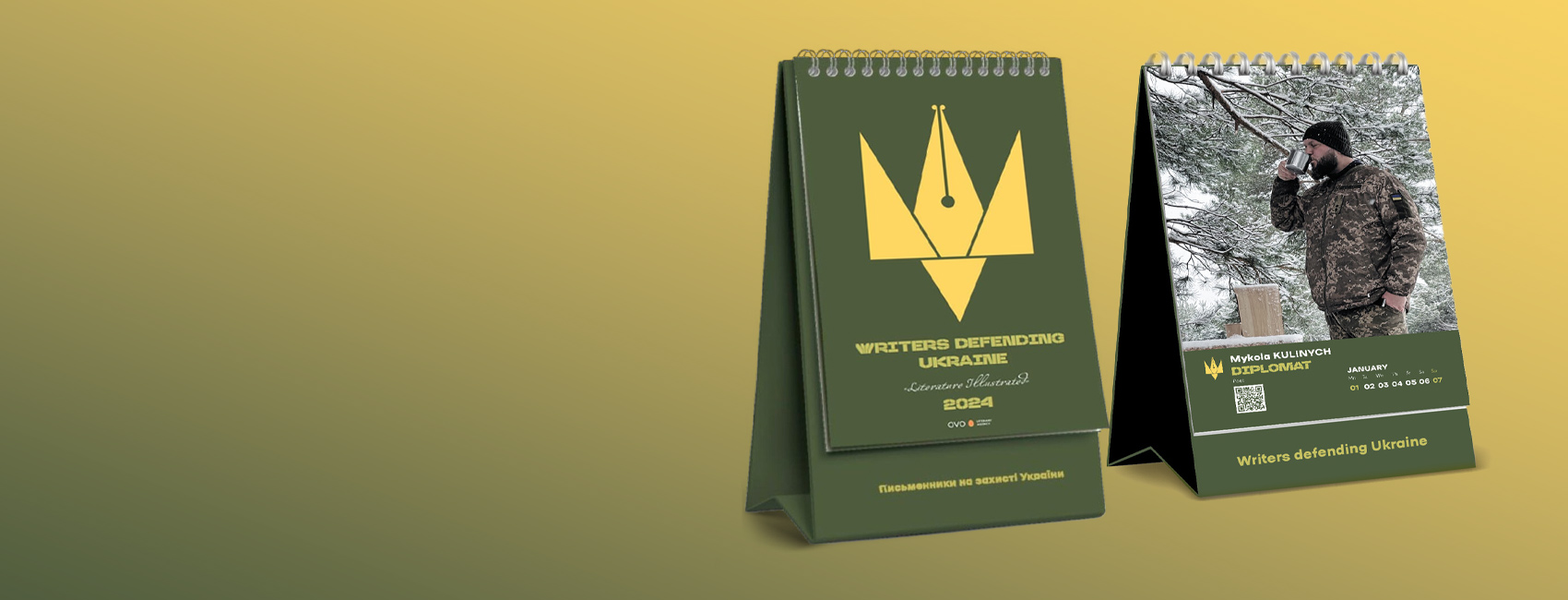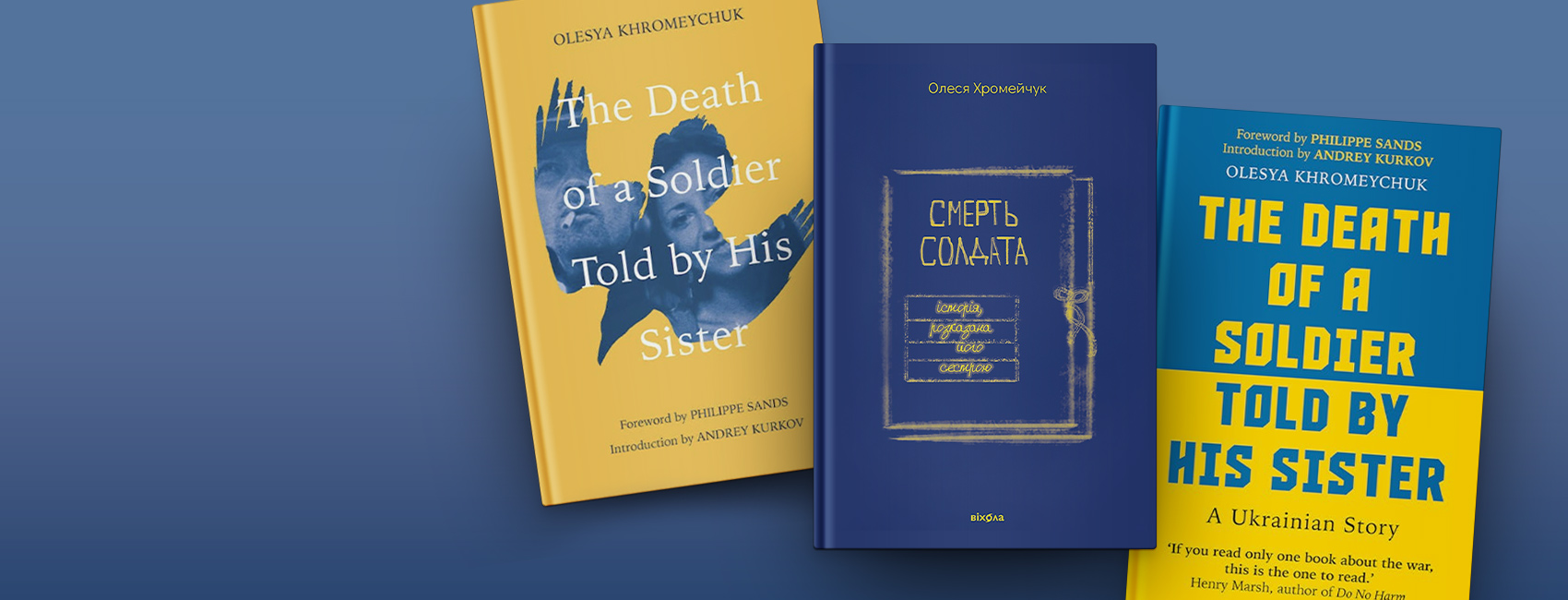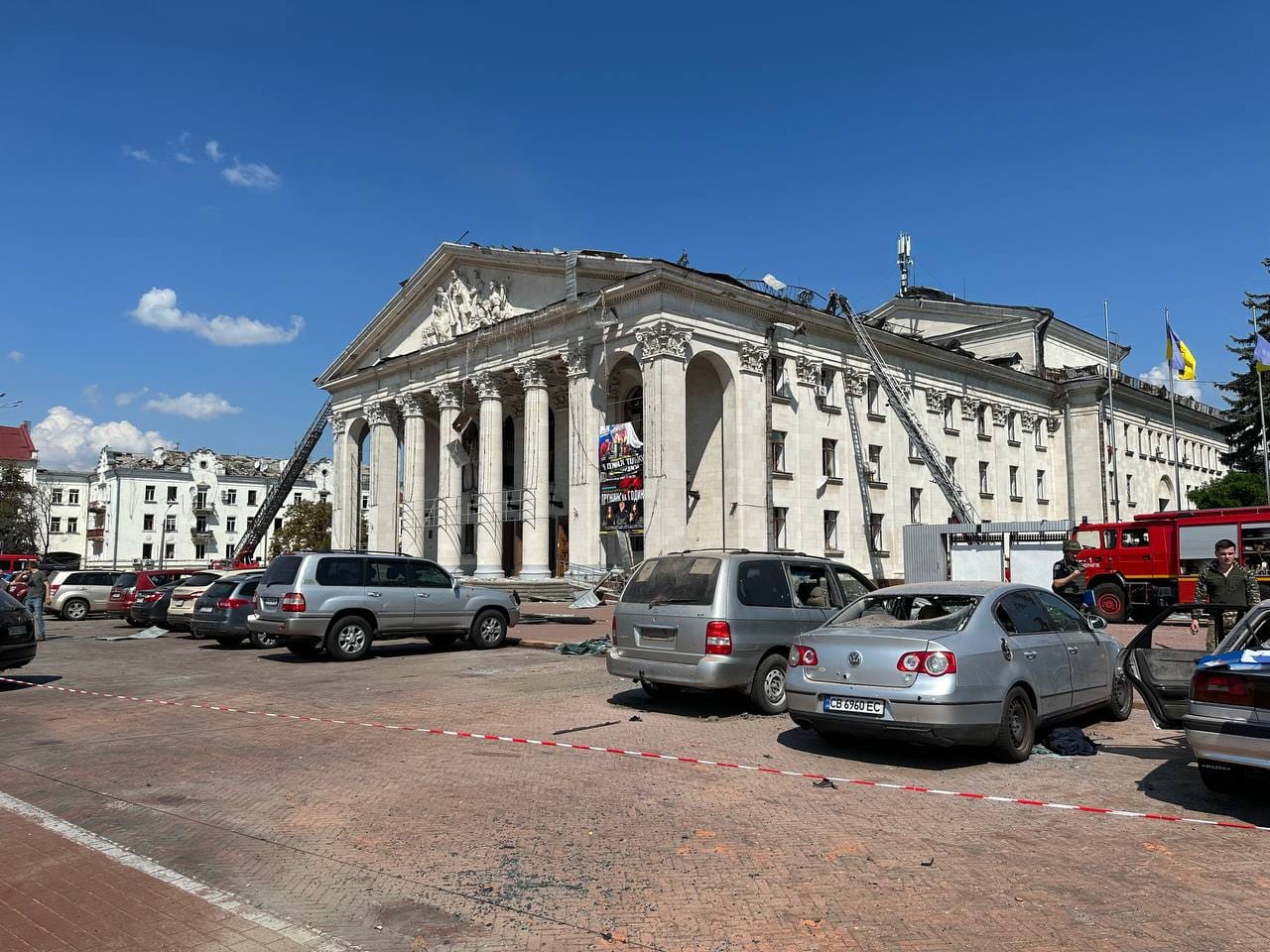* ESC - закрити вікно пошуку
War
The war is already speaking: books about war, published after Feb. 24
03.04.2023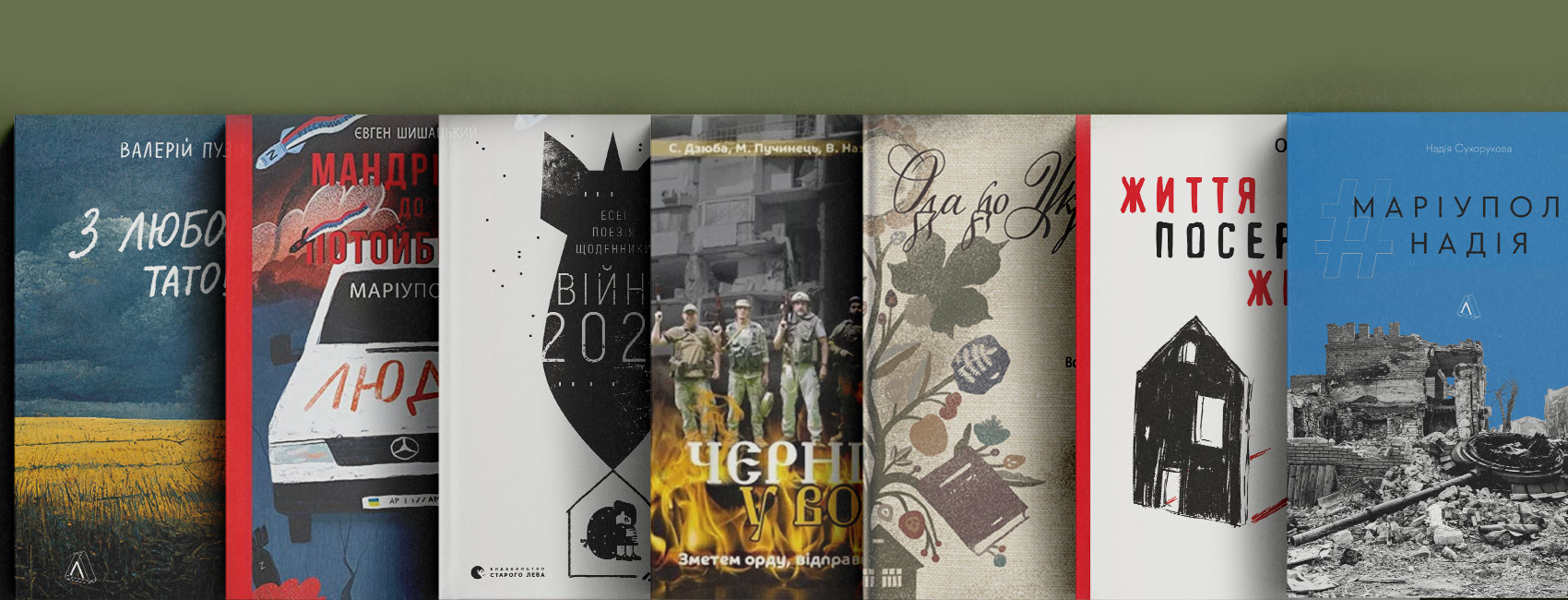
Essays, reflections about the country, life in war and beyond it, notes from the frontline and cities encircled by the enemy. Documentaries are already reacting and comprehending the new round of the Russian-Ukrainian war real-time, in the moment when the war still continues. Just after Feb. 24 publishing houses resumed their activity, and books about this war literally started running a race with it.
It is the 9th year of the war, and the Ukrainian book market has more than thousand books about it.
About 150 books, according to a count of researchers, appeared during 2022.
These are mostly literary works written by civilians describing their own experience for now. Hopefully, later there will also be books by military men and volunteers who are currently unable to fully engage in literature, limiting themselves to notes, drafts and essays from the army, the frontline or the near-frontline territories. There is also a topic less reflected in books: emigration, fleeing abroad from the war, staying outside the country. Many books are now published in the format of diaries, partially because everything is written in the heat of the moment, and this format is the best way for authors to describe the reality they see around them.
We’ll tell you about seven books from the first year of the full-scale invasion, written by different authors, both civilian and military, from different cities and parts of Ukraine. The authors write both about themselves and others, immersing themselves in the pain of a new round of war.
Travel to the Netherland. Mariupol (Мандрівка до потойбіччя. Маріуполь)
— Yevhen Shyshatskyi, – Folio, 2022 – 223 p.
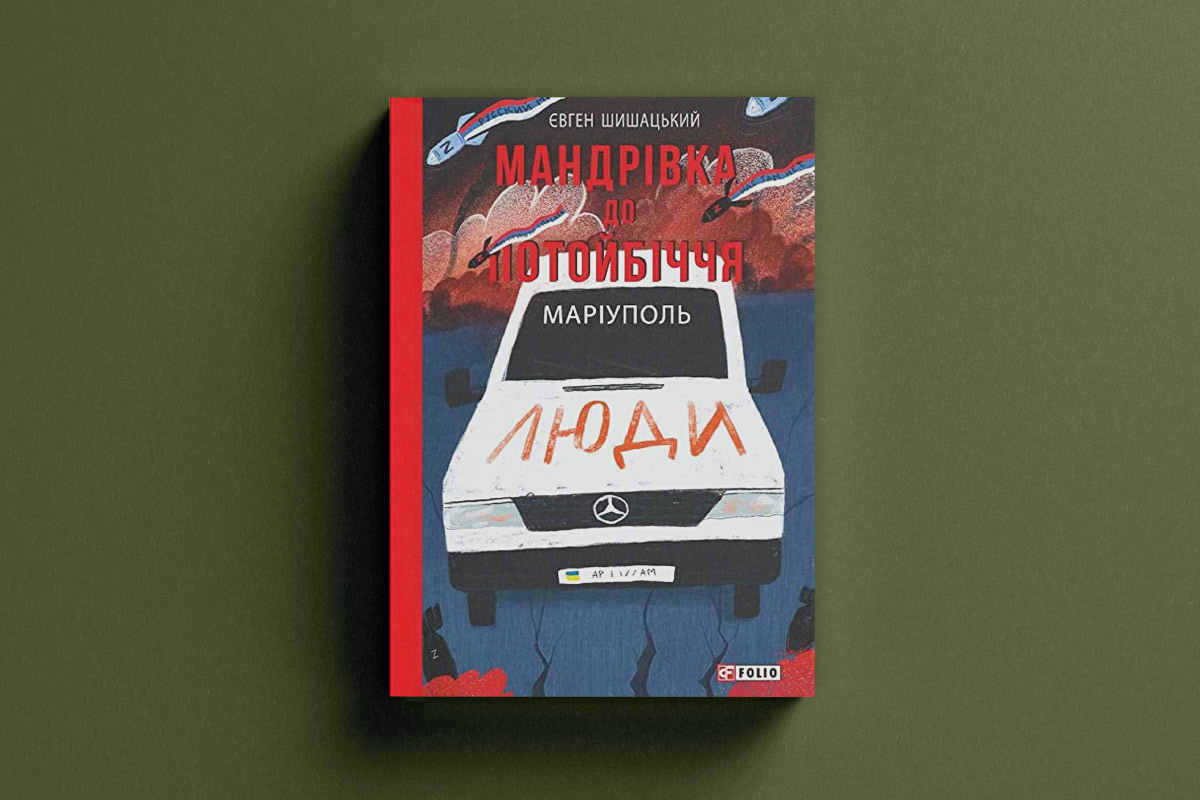
Mariupol is the hometown of a former journalist Yevhen Shyshatskyi. He lived in Donetsk before 2014 and when the war started moved to Kyiv. He left his childhood, memories, mother, family and friends in Mariupol. Having lost contact with them after the full-scale invasion, Yevhen decided to load his van with humanitarian aid and make his way to Marik, as locals call the city.
Mariupol has always been a city the author did not want to return to. Now he wanted to get as close to it as possible in order to rescue at least someone, if not his family.
In his book, published in the first months of the full-scale invasion, Yevhen Shyshatskyi describes a week-long journey to the “uncontrolled area”: checkpoints, detentions, interrogations, different and controversial people. The further the author and the lead character of the story go, the more unexpected and controversial the characters, actions, paths and decisions of the people Shyshatskyi meets become. Even if it is a fighter of the self-proclaimed Donetsk People’s Republik.
By the author’s efforts this story is not just a description of everything that happened to him. There are also stories about the author’s complicated relationship with Mariupol, childhood memories and many lyrical digressions that could maybe harm a fiction book, not a documentary.
The story is based on a classical literary plot about a journey to an unknown, inaccessible place to many other people, which, however, not everyone would like to visit.
The book was written and published in just a short time. With less haste, the plot could have been more thoughtful. But in general, the story reads like an exciting adventure thriller. And the most striking thing about the book is that its time period is not fictional. It is a very real piece of Ukrainian land.
Ukrainian Folio Publishing House began publishing books about the war most actively, simultaneously with its continuation. It also published six books of monthly chronicles of the war and the president’s daily speeches, with corresponding titles for the month of the war — “Month of War. A Chronicle of Events. Speeches and Addresses of the President of Ukraine Volodymyr Zelenskyi.”
Chernihiv on Fire. We sweep the horde away, and get it to hell (Чернігів у вогні. Зметем орду, відправимо до пекла!)
— Desna Poligraph, 2022 – 472 p.
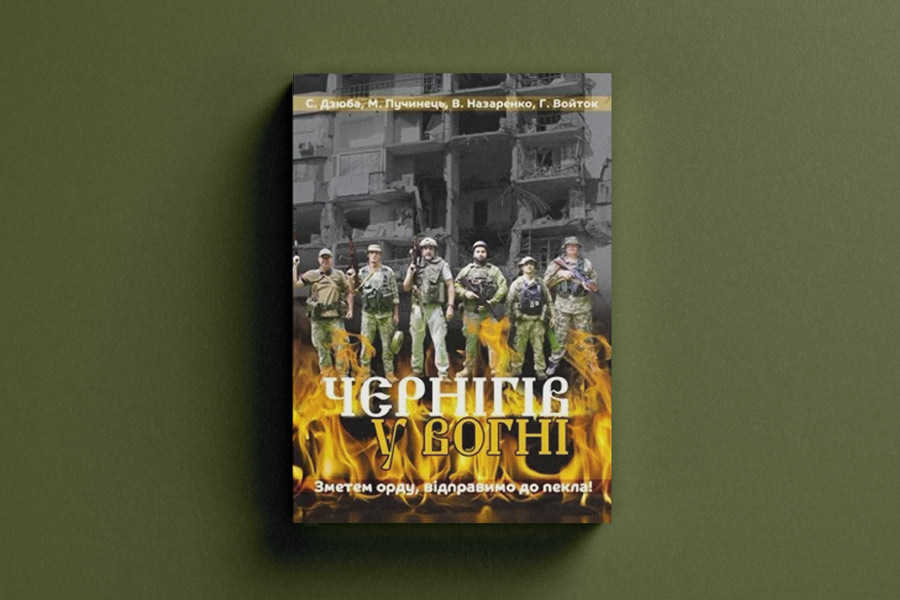
This book is a common project by Operational Command “South” and “Chernihivshchyna” regional newspaper. The book was published in a great number — 5,000 copies.
Cooperation with the operational command probably means that there are no sensational details of complex defense operations or tactics. However, these are the first collected memoirs of soldiers, volunteers and medics who were stationed or performed tasks in different parts of Chernihiv region.
The book consists of journalist interviews recorded by Serhii Dziuba, Mariia Putchynets, Vitalii Nazarenko and Hryhorii Voitiuk. The number of people interviewed is large, but the interviews are not entirely about the defense of Chernihiv. The authors ask more questions about the past of the military, their families, dreams and views. These interviews are rather attempts to portray defenders.
The published conversations often reveal stories that would be worthy of separate works — the faces of defense forces are no less interesting than the defense itself. The book, for example, contains a story of a soldier with the call sign “Tankman” who fought from 2014 until his serious injury in the Avdiivka industrial area. He was supposed to go for rehabilitation, but killed a man with a knife during a conflict in a bus. Since 2018, “Tankman” and several dozen other convicted veterans have been serving their sentences in the colony, where the Russian military appeared on Feb. 26 2022. In order to save the veterans, the management of the prison released them and took them out of the colony secretly. “Tankman” tells how the former soldiers first got to the nearest district center behind enemy lines, and from there they were transported to Chernihiv to join the Armed Forces of Ukraine.
Or there’s a story of a driver “Toha”, who drove a medical bus “Bohdan” to the checkpoints of the last lines of defense, delivering medicine and food and evacuating the seriously wounded from Chernihiv to Kyiv through the last “safe” road that was constantly shelled by the Russians.
In addition to the stories of people, there are also stories of places. Often unexpected and symbolic, such as the one when the Ukrainian military poured the fire on the Russians near Kruty in March 2022 (Battle of Kruty, January 1918. 400 Ukrainian soldiers from the Bakhmach garrison, 300 of which were students, resisted 4,000 Bolshevik troops.)
Love. Daddy (З любов’ю — тато!)
— Valeriy Puzik – Laboratory, 2022 – 216 p.
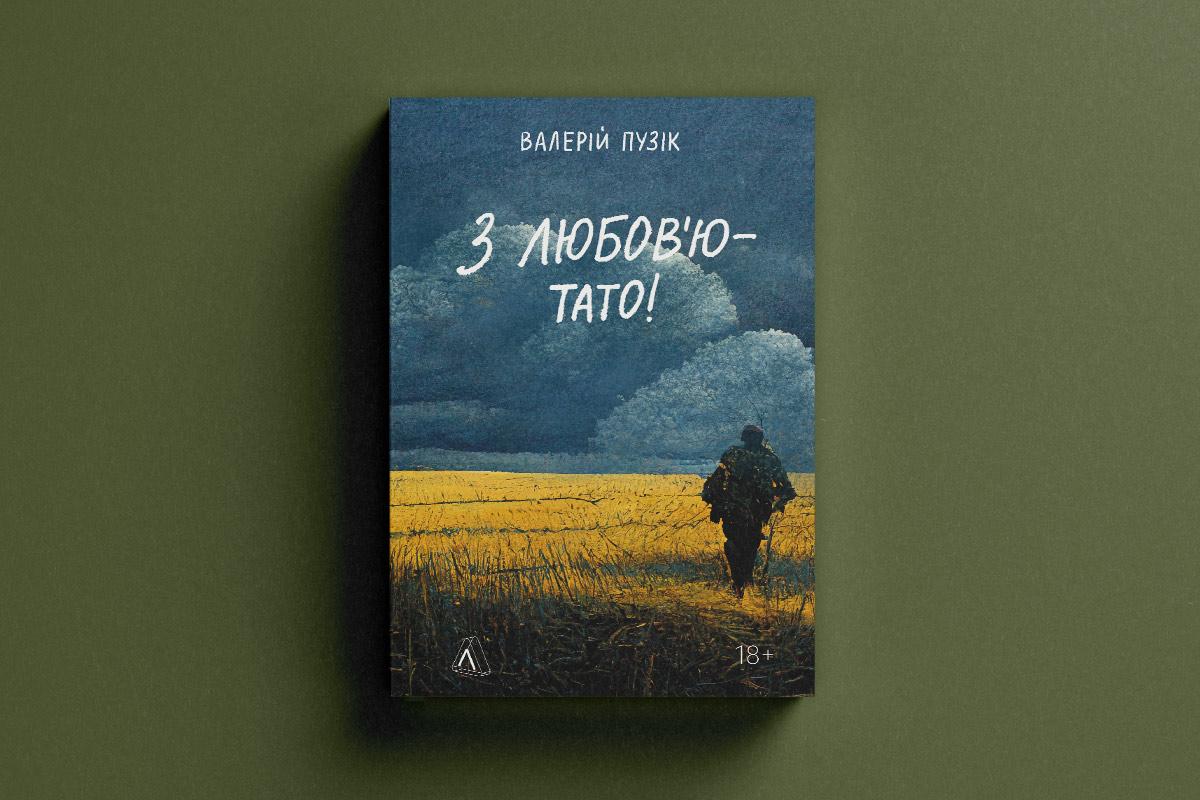
Valeriy Puzik is a writer, director, veteran and a military of the Armed Forces of Ukraine, again. His new book is a collection of written or imagined letters to his son and wife, notes on the current war, and memories of the pre-February war, which, as the author notes, was known under the word “there”. “There” is everywhere now. And the author, who did not choose this life, stands up for his country, his son, his wife and his son’s favorite bookstore, asking himself not to stop writing.
Stories about everyday life during the war alternate with poems and letters to his son and wife. They are equally truthful: the addressee speaks sincerely about himself, his feelings and pain, his fears and fatigue, but with reference to the age and experience of the recipient.
The author notes that this book was not supposed to exist at all. He did not want to write about the war anymore.
The War of 2022: diaries, essays, poetry (Війна 2022: щоденники, есеї, поезія)
— Compiler: Volodymyr Rafeyenko – The Old Lion Publishing House, 2022 – 440 p.
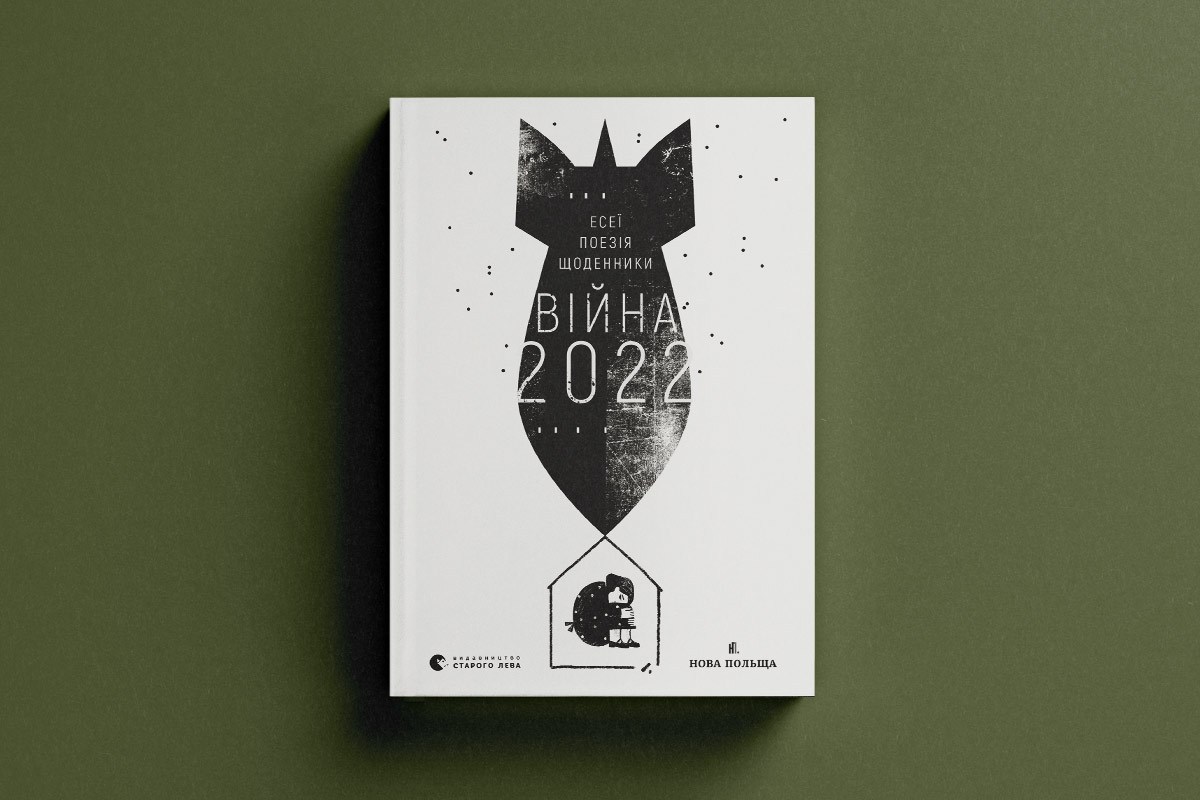
This book contains fragments of diaries, essays and poems by contemporary authors written after February 24. Among the authors are Serhiy Zhadan, Oleksandr Mykhed, Petro Yatsenko, Iryna Tsilyk, Lyubko Deresh, Sofia Andrukhovych and other Ukrainian authors. On the day the full-scale invasion started, each of them found themselves in different parts of the country and experienced the beginning of the war in their own way.
Some of them started volunteering at the railway station, like Bohdana Romantsova, others took up arms, like Artem Chekh, others hosted displaced people, like Anastasia Levkova. All of them, as people, not just as writers, recorded what they saw in their private or online diaries.
The texts in this collection are not only descriptions of what happened to these people but also reflections on the war, the country and everything they saw around. In this very same book Volodymyr Rafeyenko says “you need to write a novel” about what he saw and heard during these days of military resistance.
Ode to Ukraine (Ода до України)
— Compiler: Emmanuel Ruben – #книголав, 2022 – 248 p.
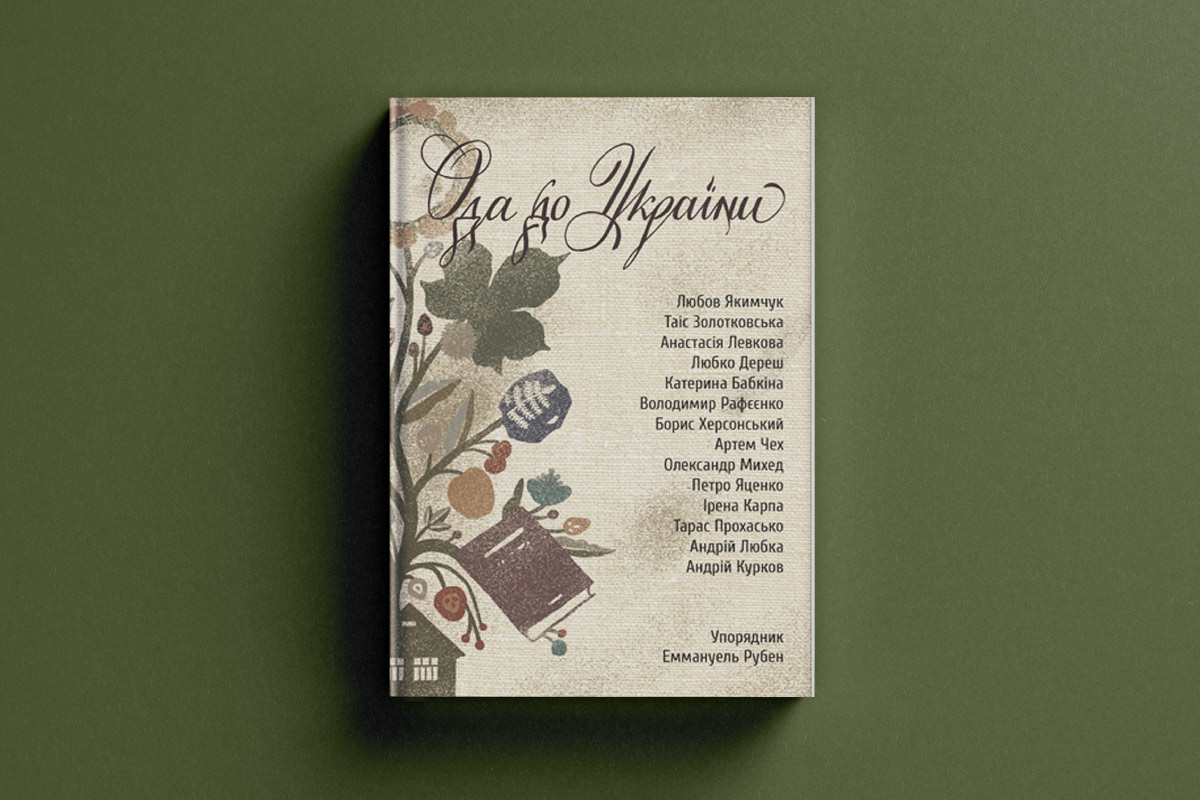
One more collection of texts by Ukrainian writers. These texts, however, are no longer texts about the war. In the days of the big war and under its influence, the authors of the anthology tell readers about places important for them: Ukrainian towns, villages, roads, hills. How they saw, see and will see them, what they mean for them, as well as for those who live there or have remained forever connected to those landscapes. What these places are today, what they were a century ago and what they will remain even despite the war.
For the authors of the texts, it may be the first war, but for the landscapes they mention, it is just another one in a row.
Liubov Yakymchuk talks about her native Zolote-5 in the east, where people mostly become miners rather than poets, and about Kybyntsi in Poltava region, where the poet Mykhailo Semenko was born. And where the poetess’s parents settled after the war came to their home in Zolote-5. Anastasia Levkova, the author of a book for children about the Crimean Tatar folk singer Ashyk Omer, chose to tell the story of Bakhchysarai for the collection. Against the backdrop of greenery, rocks, old and new architecture, the story of a Crimean Tatar family, ancient fairy tales, altered, hidden stories of the streets where someone lived and repressions that someone did not survive, awakens.
This is not a tourist guide or travelogue by no means. These are indeed deep and thoughtful stories about life against the backdrop of the landscapes that are Ukraine.
Life in the Middle of Life (Життя посеред Життя)
— Olha Kari – Yakaboo Publishing, 2022 – 216 p.
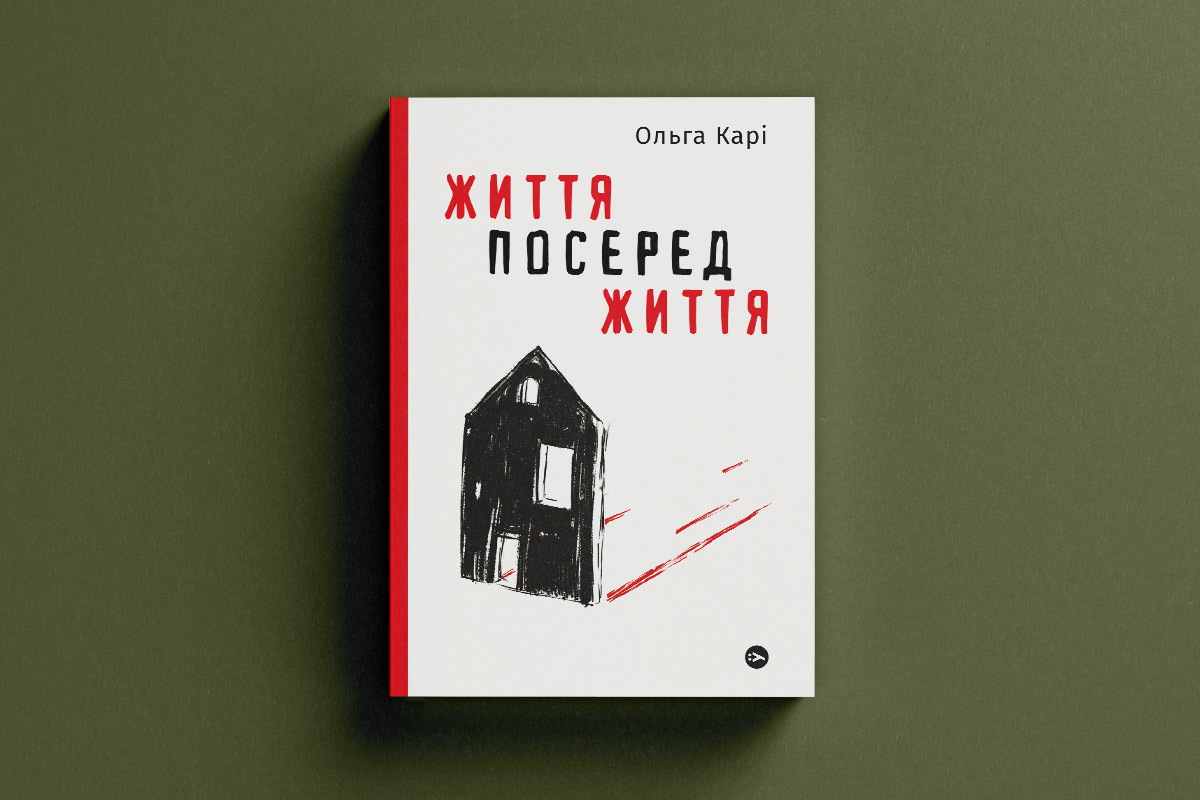
This book by Ukrainian writer Olha Kari, who faced a full-scale invasion in Kyiv, is like a diary with elements of an essay. She wrote down the everyday life in which she found herself in the capital of Ukraine in March, when small towns around were under occupation, Russian troops threatened Kyiv now and again and her parents were sitting in the basement in the besieged Chernihiv.
Olya’s stories are quite simple: trips to the shops, conversations with her family, living in the corridor amidst great grief. The lead character is an ordinary woman in Kyiv. She has no other experience of living through war on the front line or in a dugout. However, Olha Kari believes that any experience, including that of those who fought near the capital or anywhere else in basements, corridors, hugging children or cats, should be recorded and heard.
“Life in the Middle of Life” is also a logical continuation of the author’s previous books “Uncle Zaven’s Fish” about Armenia and “Squash Stewed Fruit” about life in the 1990s. The previous books depicted ordinary people and ordinary stories, showing a person in the middle of the life.
Mariupol Nadia (Маріуполь Надія)
— Nadiia Sukhorukova – Laboratory, 2023 – 224 p.
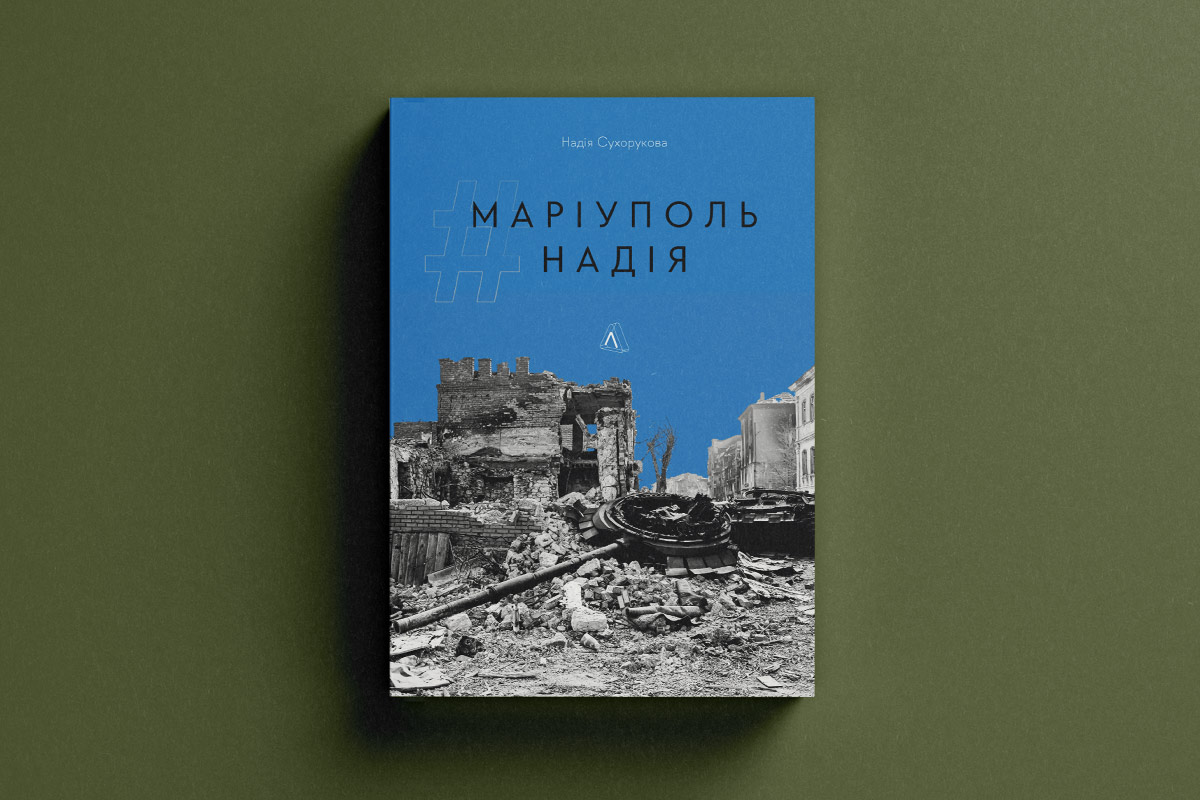
The Facebook diary of Nadiia Sukhorukova, a journalist from Mariupol, is published. The book consists of her daily posts on social media, which she published from the besieged city of Mariupol. These notes were read by thousands of people and quoted on international platforms. Now all of this will be published under one cover.
Nadiia Sukhorukova’s book is an example of diaries that are likely to become a popular form of describing this war. Just as Olha Kari’s “Life in the Middle of Life”, this book is about the everyday life of a person, a woman, a journalist in her hometown. This is the most real reality, intertwined with the personal feelings of a person who lives, observes and records how her hometown is being destroyed by the Russian army.
An important phrase that seems to pierce the diary is the words of Nadiia’s neighbor that God has left Mariupol. He was frightened of everything he saw. At the same time, Nadiia and thousands of other residents continued to watch. The cover for the printed diary was created by Daniil Nemyrovsky, a graphic artist who lived and worked in Mariupol before the full-scale invasion.
Read also: Translate this: non-fiction that will help you understand Ukraine
This publication is sponsored by the Chytomo’s Patreon community
що більше читаєш – то ширші можливості


